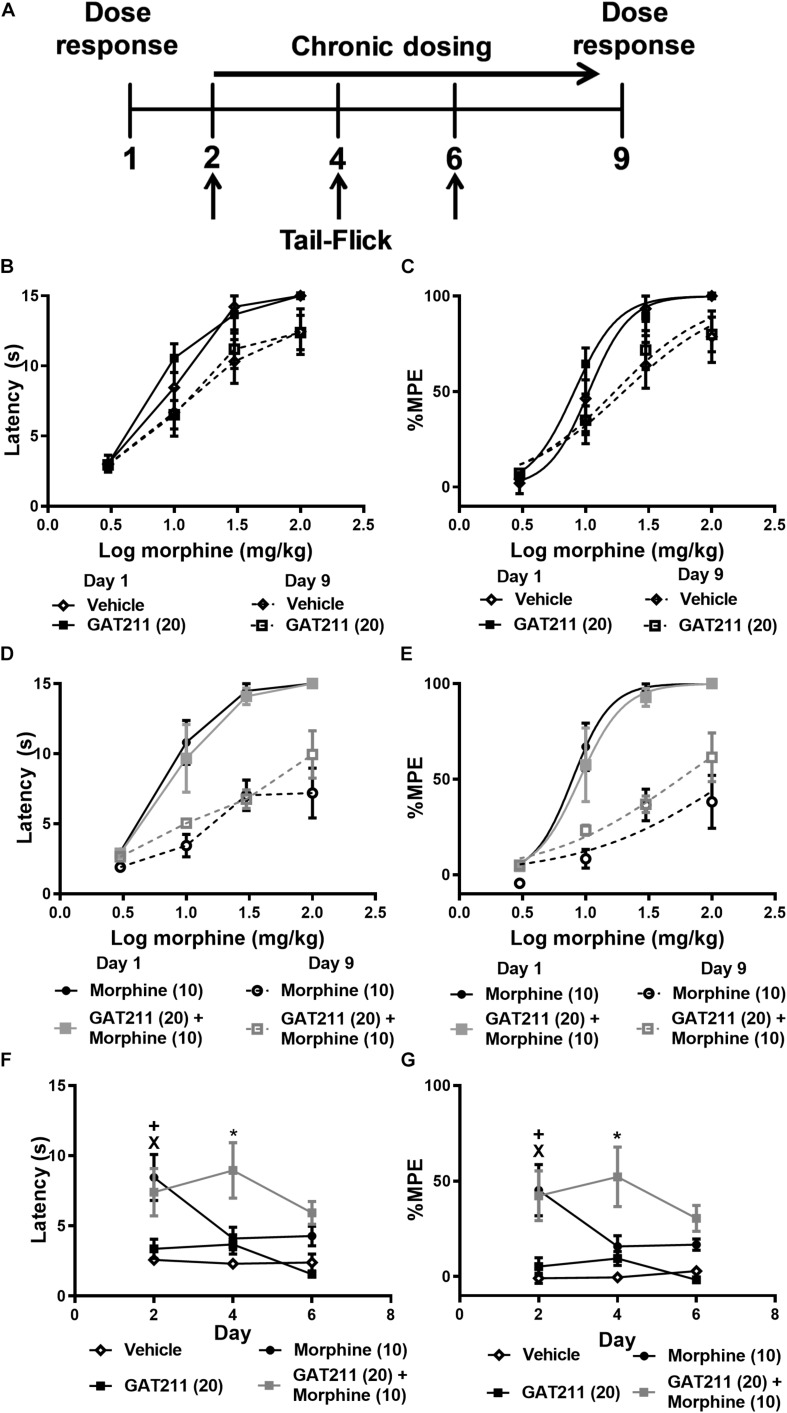FIGURE 4.
Co-treatment of GAT211 with morphine reduces tolerance to morphine antinociception in the tail-flick test. Schematic shows timing of experimental procedures (A); vertical arrows show time of assessment of tail flick latencies, which were measured 30 min following drug administration (i.p.) on days 2, 4, and 6 of repeated dosing (A). Ascending doses of morphine (0, 1, 3, 10, 30, 100 mg/kg i.p.) produced dose-dependent increases in tail-flick antinociception. Repeated injections of vehicle or GAT211 (20 mg/kg i.p. × 7 days) did not reliably shift the morphine dose response curve (B,C). Repeated injection of morphine (10 mg/kg i.p. × 7 days) produced a right-ward shift in the dose-response curve of morphine in producing antinociception in the tail-immersion test (D,E). The combination of GAT211 (20 mg/kg i.p.) + morphine (10 mg/kg i.p.) also produced a right-ward shift in the dose-response curve for morphine to produce tail-flick antinociception albeit to a lesser degree (D,E). Tolerance to morphine-induced antinociception in the tail immersion test was delayed by co-treatment with GAT211 (20 mg/kg i.p.) (F,G). GAT211+ morphine cotreatment produced heightened antinociception on day 4 but not on day 6 of repeated injections compared to all other groups (F,G). Vehicle and GAT211 do not elicit tail-flick antinociception when administered alone (F,G). Data are expressed as tail-flick latencies in seconds (B,D,F) and values transformed to % MPE (C,E,G) values. XP < 0.05 morphine vs. Vehicle and GAT211, +P < 0.05 GAT211 + morphine vs. Vehicle and GAT211 *P < 0.05 GAT211 + morphine vs. all other groups, two-way ANOVA followed by Bonferroni post-hoc. Mean ± SEM (n = 6 per group).

